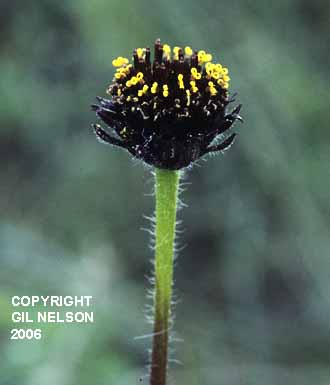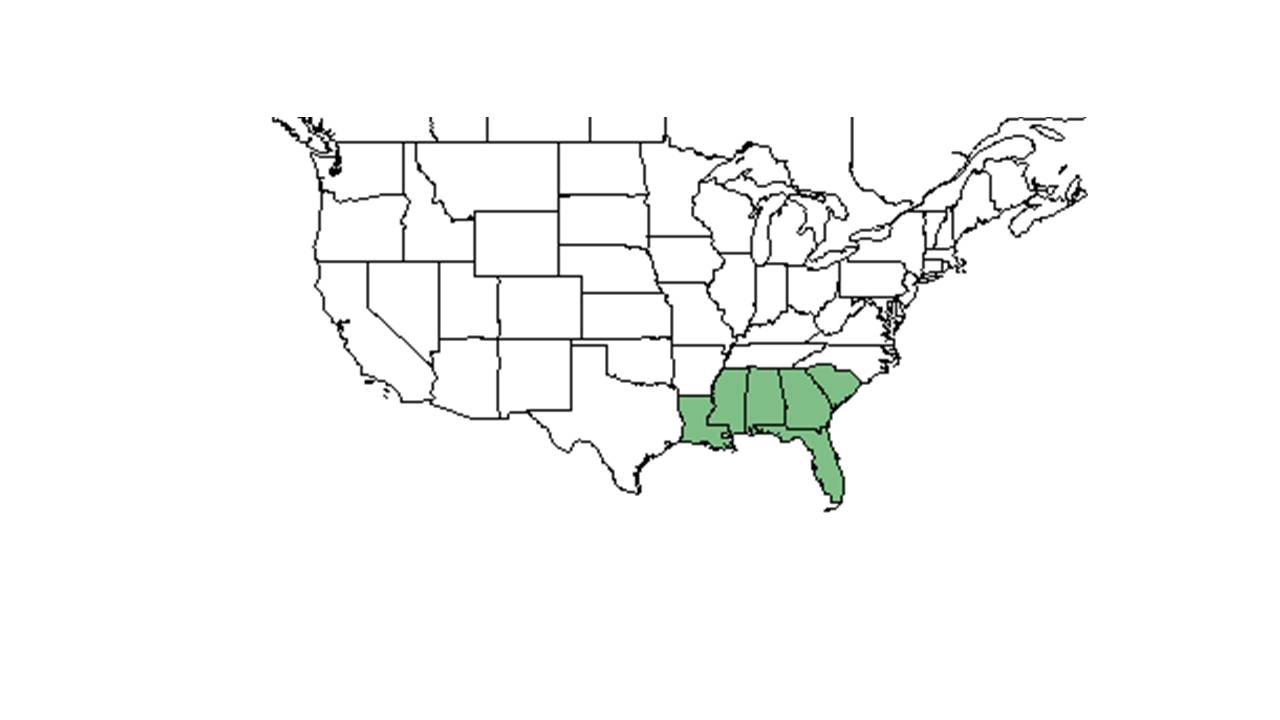Difference between revisions of "Helianthus radula"
Ruthstetler (talk | contribs) |
Ruthstetler (talk | contribs) |
||
| Line 26: | Line 26: | ||
==Ecology== | ==Ecology== | ||
===Habitat=== <!--Natural communities, human disturbed habitats, topography, hydrology, soils, light, fire regime requirements for removal of competition, etc.--> | ===Habitat=== <!--Natural communities, human disturbed habitats, topography, hydrology, soils, light, fire regime requirements for removal of competition, etc.--> | ||
| − | It can live in loblolly or slash pine communities | + | It can live in loblolly or slash pine communities,<ref name="Yager et al 2007">Yager, L. Y., M. G. Hinderliter, et al. (2007). "Gopher tortoise response to habitat management by prescribed burning." The Journal of Wildlife Management 71: 428-434.</ref>, upland longleaf pine communities, <ref>Kirkman, L. K., M. B. Drew, et al. (1998). "Effects of experimental fire regimes on the population dynamics of Schwalbea americana L." Plant Ecology 137: 115-137.</ref><ref name="Gilliam et al 2006"/> |
| − | + | ||
| − | |||
===Phenology=== <!--Timing off flowering, fruiting, seed dispersal, and environmental triggers. Cite PanFlora website if appropriate: http://www.gilnelson.com/PanFlora/ --> | ===Phenology=== <!--Timing off flowering, fruiting, seed dispersal, and environmental triggers. Cite PanFlora website if appropriate: http://www.gilnelson.com/PanFlora/ --> | ||
Flowering and fruiting has been observed in August through November (FSU Herbarium). | Flowering and fruiting has been observed in August through November (FSU Herbarium). | ||
Revision as of 17:45, 14 July 2015
| Helianthus radula | |
|---|---|

| |
| Photo was taken by Gil Nelson | |
| Scientific classification | |
| Kingdom: | Plantae |
| Division: | Magnoliophyta - Flowering plants |
| Class: | Magnoliopsida – Dicotyledons |
| Order: | Asterales |
| Family: | Asteraceae ⁄ Compositae |
| Genus: | Helianthus |
| Species: | H. radula |
| Binomial name | |
| Helianthus radula (Pursh) Torr. & A. Gray | |

| |
| Natural range of Helianthus radula from USDA NRCS Plants Database. | |
Contents
Description
Common Name: rayless sunflower
Helianthus radula is a perennial herbaceous species.
Distribution
Ecology
Habitat
It can live in loblolly or slash pine communities,[1], upland longleaf pine communities, [2][3]
Phenology
Flowering and fruiting has been observed in August through November (FSU Herbarium).
Seed dispersal
Seed bank and germination
Fire ecology
This species has been found in habitat that is burned frequently (FSU Herbarium). For example, the Wade Tract has been burned biennially.[3]
Pollination
Use by animals
Diseases and parasites
Conservation and Management
Cultivation and restoration
Photo Gallery
References and notes
Florida State University Robert K. Godfrey Herbarium database. URL: http://herbarium.bio.fsu.edu. Last accessed: June 2014.
Collectors: Loran C. Anderson, Roomie Wilson, Delzie Demaree, C. Ritchie Bell, F. H. Sargent, Samuel B. Jones, John W. Thieret, Almut G. Jones, A. F. Clewell, R. K. Godfrey, Bruce Hansen, JoAnn Hansen, Robert L. Lazor, R. Kral, J. P. Gillespie, R. E. Perdue, Jr., Paul L. Redfearn, Jr., Kurt E. Blum, D. B. Ward, S. S. Ward, John B. Nelson, G. R. Knight, Cecil R Slaughter, Nancy E. Jordan, R. A. Norris, and R. Komarek.
States and Counties: Florida: Bay, Calhoun, Citrus, Flagler, Franklin, Gadsden, Holmes, Jefferson, Lake, Leon, Levy, Liberty, Madison, Nassau, Okaloosa, Orange, Osceola, Putnam, St Johns, Taylor, Wakulla, and Walton. Georgia: Thomas. Louisiana: Tangipahoa and Washington. Mississippi: Jackson, Lamar, and Pearl River. South Carolina: Colleton.
- ↑ Yager, L. Y., M. G. Hinderliter, et al. (2007). "Gopher tortoise response to habitat management by prescribed burning." The Journal of Wildlife Management 71: 428-434.
- ↑ Kirkman, L. K., M. B. Drew, et al. (1998). "Effects of experimental fire regimes on the population dynamics of Schwalbea americana L." Plant Ecology 137: 115-137.
- ↑ 3.0 3.1 Gilliam, F. S., W. J. Platt, et al. (2006). "Natural disturbances and the physiognomy of pine savannas: A phenomenological model." Applied Vegetation Science 9: 83-96.